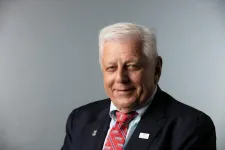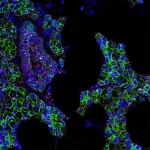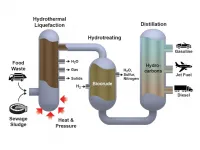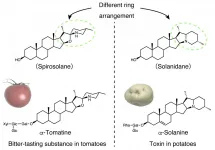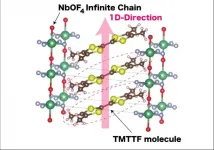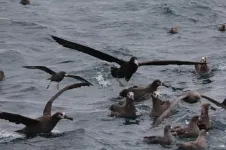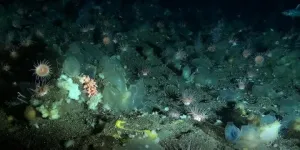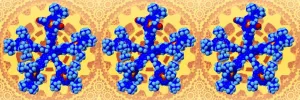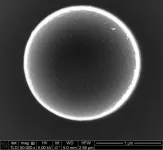(Press-News.org) Smoking cigarettes causes 480,000 premature deaths each year in the United States, due mainly to a two-fold risk of cardiovascular disease and a 20-fold risk of lung cancer. Although smoking rates have declined dramatically, there are currently 35 million smokers in the U.S.
In a commentary published in the Ochsner Medical Journal, Charles H. Hennekens, M.D., Dr.PH, senior author, the First Sir Richard Doll Professor, and senior academic advisor in the Schmidt College of Medicine at Florida Atlantic University, and colleagues, highlight how failure to institute smoking cessation in hospitalized patients is a missed opportunity to avoid many premature deaths.
Each year in the U.S., approximately 30 million hospitalizations occur in individuals 18 and older. Of these, more than 7 million are current cigarette smokers whose average hospital stay is several days. The authors comment that starting smoking cessation therapy during hospitalization and maintaining high adherence post-discharge can markedly improve permanent quit rates in these patients with minimal to no side effects. Smoking cessation therapy also should include long-term counseling and at least 90 days of a prescription drug, in particular, varenicline, which works by blocking the pleasurable sensations of nicotine on the brain.
"Providing multifactorial intensive counseling interventions during and after hospitalization and initiating and maintaining adherence to drug therapy are all independent predictors of permanent smoking cessation rates," said Hennekens. "All of these efforts have the potential to reduce many premature deaths from cigarette smoking, which remain alarmingly and unnecessarily high in the U.S. and has already become so worldwide."
Quitting smoking reduces the risk of dying from cardiovascular disease beginning with a matter of months reaching that of lifelong non-smokers within a few years, even among older adults. In contrast, reductions in mortality risk from lung cancer only begin to appear several years after quitting, and even by 10 years, the risk is reduced to only approximately midway between continuing smokers and lifelong smokers. This is because the risks of cardiovascular disease relate to the numbers of cigarettes currently smoked and the risks of cancer to the duration of the habit.
The authors dedicated this manuscript to the memory of the late Edward D. Frohlich, M.D., Ph.D., who was the Alton Ochsner Distinguished Scientist at the Ochsner Clinic Foundation and a staff member of the Ochsner Clinic. The authors refer to Frohlich as a "great man and a good man" who was a valued mentor, colleague and friend. As a member of the Ochsner family for more than 40 years, Frohlich's outstanding contributions helped to propel the Ochsner Clinic to a premier national and international research institution.
In recognition of his seminal discovery research on the hazards of cigarette smoking, Hennekens was the 29th recipient of the prestigious Alton Ochsner Award. Ochsner, a thoracic surgeon, and Michael DeBakey M.D., a future world-renowned cardiovascular surgeon, were early recipients of the award for their case series on smoking and lung cancer in the 1930s. Doll, a British physician, became the foremost epidemiologist of 20th century for pioneering epidemiologic studies, first with Sir Austin Bradford Hill and later with Sir Richard Peto - all who received the Alton Ochsner Award for their contributions to the enormous hazards of cigarette smoking.
From 1995 to 2005, Science Watch ranked Hennekens as the third most widely cited medical researcher in the world and five of the top 20 were his former trainees and/or fellows. In 2012, Science Heroes ranked Hennekens No. 81 in the history of the world for having saved more than 1.1 million lives. In 2016, he was ranked the No. 14 "Top Living Medical Scientist in the World."
Based in part on Hennekens' seminal work on the large clinical and public health hazards of smoking cigarettes, FAU President John Kelly adopted a university-wide tobacco free policy.
INFORMATION:
Co-authors are Roger L. Zoorob, M.D., M.P.H., professor and chair, Department of Family and Community Medicine, Baylor College of Medicine; and Robert S. Levine, M.D., a professor of family and community medicine, Baylor College of Medicine and an affiliate professor in FAU's Schmidt College of Medicine.
About the Charles E. Schmidt College of Medicine:
FAU's Charles E. Schmidt College of Medicine is one of approximately 155 accredited medical schools in the U.S. The college was launched in 2010, when the Florida Board of Governors made a landmark decision authorizing FAU to award the M.D. degree. After receiving approval from the Florida legislature and the governor, it became the 134th allopathic medical school in North America. With more than 70 full and part-time faculty and more than 1,300 affiliate faculty, the college matriculates 64 medical students each year and has been nationally recognized for its innovative curriculum. To further FAU's commitment to increase much needed medical residency positions in Palm Beach County and to ensure that the region will continue to have an adequate and well-trained physician workforce, the FAU Charles E. Schmidt College of Medicine Consortium for Graduate Medical Education (GME) was formed in fall 2011 with five leading hospitals in Palm Beach County. The Consortium currently has five Accreditation Council for Graduate Medical Education (ACGME) accredited residencies including internal medicine, surgery, emergency medicine, psychiatry, and neurology.
About Florida Atlantic University:
Florida Atlantic University, established in 1961, officially opened its doors in 1964 as the fifth public university in Florida. Today, the University serves more than 30,000 undergraduate and graduate students across six campuses located along the southeast Florida coast. In recent years, the University has doubled its research expenditures and outpaced its peers in student achievement rates. Through the coexistence of access and excellence, FAU embodies an innovative model where traditional achievement gaps vanish. FAU is designated a Hispanic-serving institution, ranked as a top public university by U.S. News & World Report and a High Research Activity institution by the Carnegie Foundation for the Advancement of Teaching. For more information, visit http://www.fau.edu.
An international team led by scientists at the National Institutes of Health and the University of North Carolina at Chapel Hill, has found evidence that SARS-CoV-2, the virus that causes COVID-19, infects cells in the mouth.
While it's well known that the upper airways and lungs are primary sites of SARS-CoV-2 infection, there are clues the virus can infect cells in other parts of the body, such as the digestive system, blood vessels, kidneys and, as this new study shows, the mouth. The potential of the virus to infect multiple areas of the body might help explain the wide-ranging symptoms experienced by COVID-19 patients, including oral symptoms such as taste loss, dry mouth and blistering.
Moreover, the findings ...
RICHLAND, WASH.--A large-scale demonstration converting biocrude to renewable diesel fuel has passed a significant test, operating for more than 2,000 hours continuously without losing effectiveness. Scientists and engineers led by the U.S. Department of Energy's Pacific Northwest National Laboratory conducted the research to show that the process is robust enough to handle many kinds of raw material without failing.
"The biocrude oil came from many different sources, including wastewater sludge from Detroit, and food waste collected from prison and an army base," said John Holladay, a PNNL scientist and co-director of the joint Bioproducts Institute, a collaboration between ...
LA JOLLA--(March 25, 2021) The brush of an insect's wing is enough to trigger a Venus flytrap to snap shut, but the biology of how these plants sense and respond to touch is still poorly understood, especially at the molecular level. Now, a new study by Salk and Scripps Research scientists identifies what appears to be a key protein involved in touch sensitivity for flytraps and other carnivorous plants.
The findings, published March 16, 2021, in the journal eLife, help explain a critical process that has long puzzled botanists. This could help scientists better understand how plants of all kinds sense and respond to mechanical stimulation, and could also have a potential application in medical therapies that mechanically stimulate human cells such as neurons.
"We know that plants ...
A multi-institutional collaboration has revealed that α-solanine, a toxic compound found in potato plants, is a divergent of the bitter-tasting α-tomatine, which is found in tomato plants. The research group included Associate Professor MIZUTANI Masaharu and Researcher AKIYAMA Ryota et al. of Kobe University's Graduate School of Agricultural Science, Assistant Professor WATANABE Bunta of Kyoto University's Institute for Chemical Research, Senior Research Scientist UMEMOTO Naoyuki of the RIKEN Center for Sustainable Resource Science, and Professor MURANAKA Toshiya of Osaka University's Graduate School of Engineering.
It ...
Salts are far more complicated than the food seasoning - they can even act as electrical conductors, shuttling current through systems. Extremely well studied and understood, the electrical properties of salts were first theorized in 1834. Now, nearly 200 years later, researchers based in Japan have uncovered a new kind of salt.
The results were published on March 17 in Inorganic Chemistry, a journal of the American Chemical Society.
The researchers were specifically investigating how one-dimensional versions of three-dimensional substances exhibit unique physical phenomena and functionality in a process called the ...
CORVALLIS, Ore. - A novel analysis of encounters between albatross and commercial fishing vessels across the North Pacific Ocean is giving researchers important new understanding about seabird-vessel interactions that could help reduce harmful encounters.
The new research method, which combines location data from GPS-tagged albatross and commercial fishing vessels, allows researchers to accurately identify bird-vessel encounters and better understand bird behavior, environmental conditions and the characteristics that influence these encounters.
"It is hard to conceptualize how often birds ...
For the first time, researchers from the SponGES project collected year-round video footage and hydrodynamic data from the mysterious world of a deep-sea sponge ground in the Arctic. Deep-sea sponge grounds are often compared to the rich ecosystems of coral reefs and form true oases. In a world where all light has disappeared and without obvious food sources, they provide a habitat for other invertebrates and a refuge for fish in the otherwise barren landscape. It is still puzzling how these biodiversity hotspots survive in this extreme environment as deep as 1500 metres below the water surface. With over 700 hundred ...
Ikoma, Japan - Gear trains have been used for centuries to translate changes in gear rotational speed into changes in rotational force. Cars, drills, and basically anything that has spinning parts use them. Molecular-scale gears are a much more recent invention that could use light or a chemical stimulus to initiate gear rotation. Researchers at Nara Institute of Science and Technology (NAIST), Japan, in partnership with research teams at University Paul Sabatier, France, report in a new study published in Chemical Science a means to visualize snapshots of an ultrasmall ...
People who are physically active on a regular basis recover better after surgery for colorectal cancer. However, starting to exercise only after the diagnosis is a fact had no effect on recovery, a University of Gothenburg thesis shows.
In working on his thesis, Aron Onerup, who obtained his doctorate in surgery at the University's Sahlgrenska Academy and is now a specialist doctor at Sahlgrenska University Hospital, carried out an observational study of 115 patients diagnosed with colorectal cancer.
The participants who had been physically inactive proved, three weeks after their surgery, to be at higher risk of not feeling that they ...
Microswimmers are artificial, self-propelled, microscopic particles. They are capable of directional motion in a solution. The Molecular Nanophotonics Group at Leipzig University has developed special particles that are smaller than one-thirtieth of the diameter of a hair. They can change their direction of motion by heating tiny gold particles on their surface and converting this energy into motion. "However, these miniaturised machines cannot take in and learn information like their living counterparts. To achieve this, we control the microswimmers externally so that they learn to navigate in a virtual environment through what is known as reinforcement learning," said Cichos.
With the help of virtual rewards, the microswimmers find their way through the liquid ...
